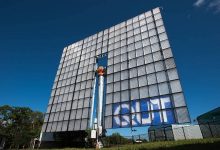Queensland has announced $250,000 in funding towards the establishment a renewable hydrogen pilot plant at the government-owned Redlands Research Facility on the Gold Coast, on the same day it has marked the state’s “first ever” delivery of green hydrogen, to Japan.
Queensland Labor Premier Annastacia Palaszcuk said on Thursday that hydrogen produced by Queensland University of Technology solar cell technology at the Redlands facility had been exported to Japan by that country’s largest petroleum conglomerate, JXTG.
Palaszczuk said the successful export of the hydrogen marked a major milestone in Queensland’s progress towards a commercially viable hydrogen industry – particularly as the storage and transport of hydrogen remains one of the biggest challenges to realising its considerable on-paper potential.
“This demonstration of renewable hydrogen being successfully exported overseas is an exciting first step in producing and exporting hydrogen at a commercial scale in the future,” Palaszczuk told Queensland Parliament on Thursday.
“I applaud the project partners on making this a reality.”
Plans for a $7.5 million pilot hydrogen plant were unveiled last September, using a concentrated solar photovoltaic array developed by Japanese energy giant Sumitomo Electric Industries that has been a focus of research by a team from QUT since early 2017.
Professor Ian Mackinnon, from QUT’s Institute for Future Environments, said the green hydrogen exported to Japan was produced by adding water and acid to a chemical called toluene using the concentrated solar power as the energy source in the electrochemical conversion process.
“The toluene is converted to a substance called methyl cyclohexane (MCH), which is an energy efficient and safe method for transporting hydrogen,” Professor Mackinnon said.
“In this form, hydrogen can be shipped using conventional road and pipeline infrastructure. Once it has arrived at its destination, the renewable hydrogen is extracted from the MCH and the toluene can be re-used in the transportation cycle.”
Minister for state development, manufacturing, infrastructure and Planning, Cameron Dick said the government planned to release hydrogen industry roadmap for Queensland later in the year.
“We’re extremely fortunate to have world-class researchers and hydrogen industry representatives in Queensland, and Professor Mackinnon and Dr Thompson hold substantial academic and industry credentials in the field of research and commercial applications of hydrogen,” he said.
“Queensland has a strong future in hydrogen production and export and we are putting steps in place to make that happen, including the development of a hydrogen strategy for Queensland which will be released later this year.”
Renewable hydrogen has enjoyed a good deal of policy attention over the past two years, particularly since various studies – including from the nation’s chief scientist Alan Finkel and ARENA – highlighted the massive potential for an industry Australia, including $10 billion in exports over 20 years, and 16,000 new jobs.
Last week, the federal government granted $3.1 million to a Toyota Australia project to establish a green hydrogen hub powered by solar and battery storage at one of its old car manufacturing plants in Altona North in Victoria.
And in New South Wales, a UNSW-based effort to develop renewable hydrogen storage solutions – including a 5kWh home solar storage system – won $3.5 million in backing from green investment outfit Providence Asset Group.










